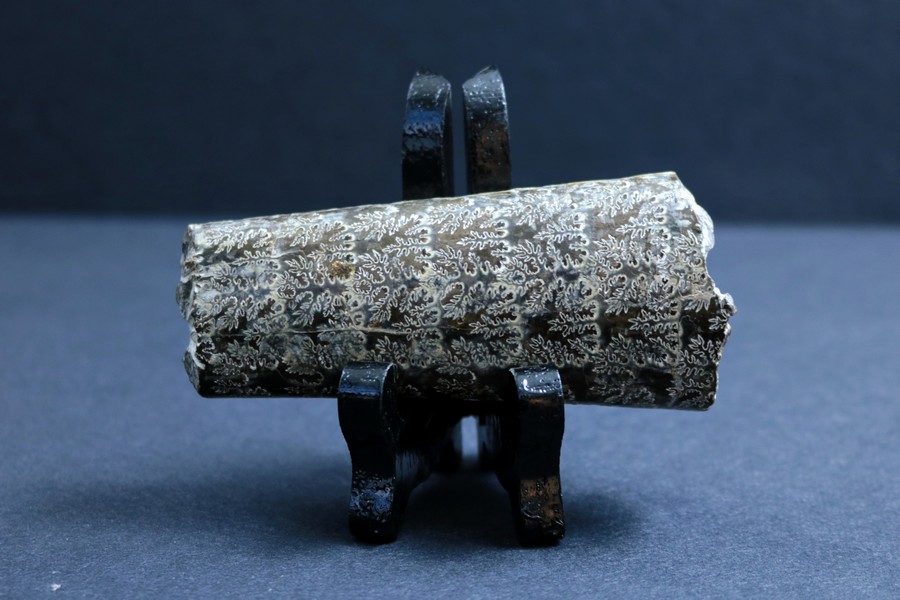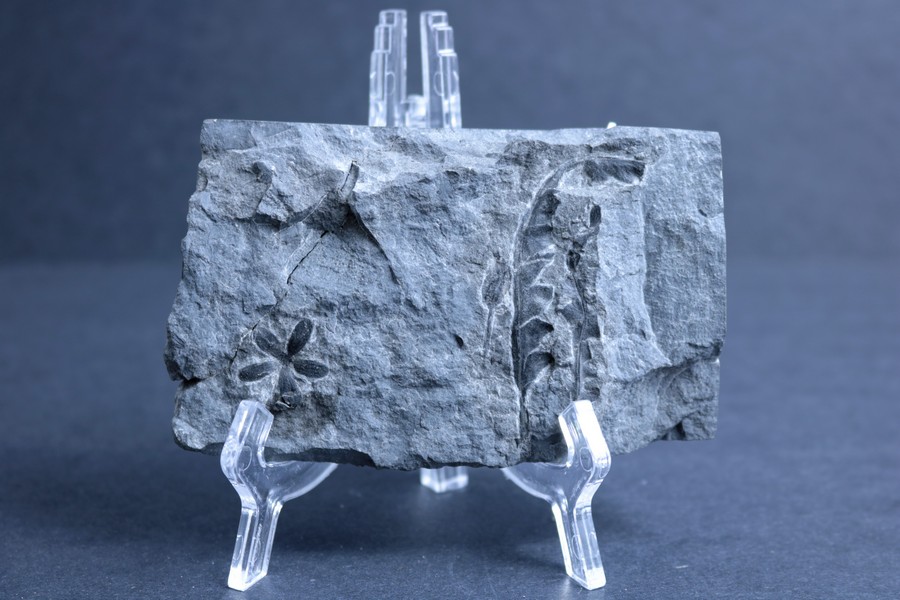Fossils and the Scale of Time
Scientists say that the vast majority of species that have lived on the earth are now extinct. But because fossils only form under very specific conditions, only about 1% of these species have been identified. This makes the study of past life an exciting and mysterious field. There will always be something new to learn and discover.
-Graham Beard
FOSSILS – 3-DIMENSIONAL RECORDS OF OUR NATURAL WORLD

The interesting lines seen on this ammonite fossil are where the shell connects to the inner chambers of the ammonite.
Fossils are physical records of living beings that have inhabited our planet since life began. Their life stories are written in the geological time line, waiting to be discovered. To find out the age of a fossil, we have to know the age of the rock in which it is found. That is why it is so important to describe exactly where fossils are found. It is also important to know about geology, which is the study of the rocks that make up the Earth’s crust. Indeed, the ‘paleo’ in paleontology is the Latin word for ‘old’ or ‘ancient’.
We know that the oldest fossils are contained in the oldest rocks. While the history of our species is measured in mere thousands of years, the earth’s history is written in millions of years of geological time. By knowing the ages of the rock layers that make up our planet, we can also know about the fossils embedded in these layers of rocks.
CYANOBACTERIA – THE BEGINNING OF LIFE ON EARTH
Life on our planet began with cyanobacteria. These were cells that could photosynthesize, converting light into the chemical energy they needed to fuel their continued survival. Stromatolites, microfossils of thread-like chains of cyanobacteria, first appeared 3,500 million years ago, in the Paleoarchean era.
In contrast, humans and other modern-day animals and plants exist in what we call the Holocene epoch (11,700 years ago to the present). The Holocene is a time period at the very end of our geologic time scale. It represents only a sliver of the planet’s long history of about 4.6 billion years.
PUTTING TOGETHER THE PIECES OF THE VANCOUVER ISLAND FOSSIL PUZZLE
Putting together our planet’s natural history is like doing a jigsaw puzzle with millions of pieces. Every time we find another missing piece, we learn something new. Amateur paleontologist Graham Beard and other local fossil enthusiasts of our Holocene era have unearthed several Vancouver Island fossils. These fossils have contributed important pieces to the puzzle of the island’s past life. These include Eocene fungi, bryophyta, flowering and coniferous plants, as well as a Pleistocene mammal.


